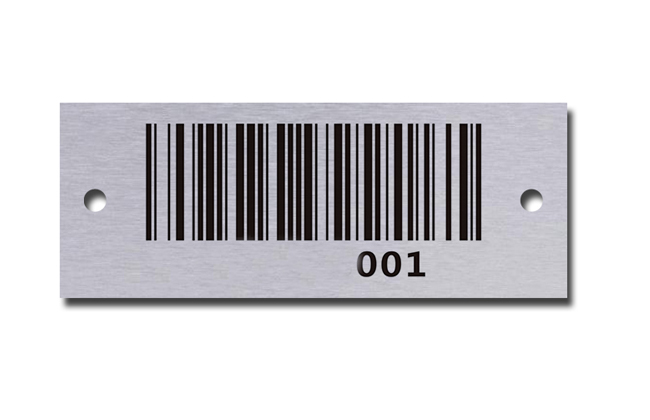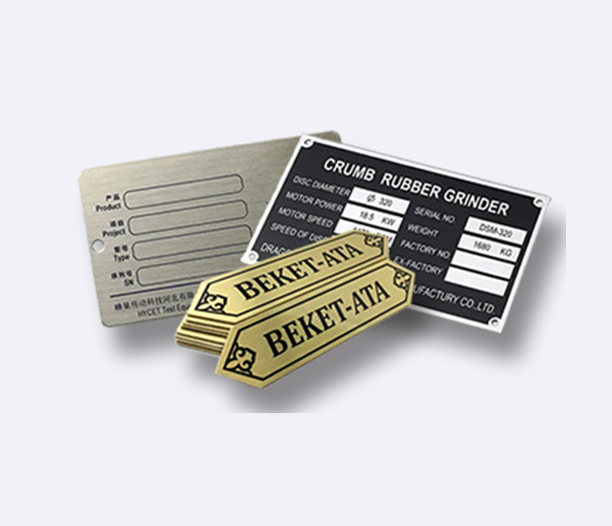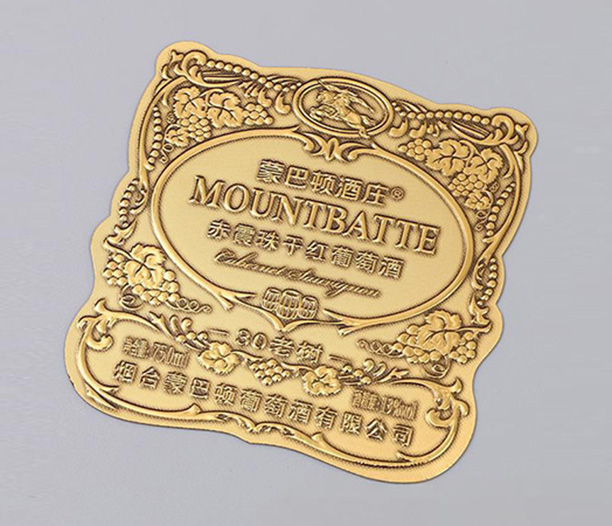If you’re in manufacturing, logistics, or warehousing, you already know how critical it is to track inventory, equipment, and products efficiently. That’s where steel barcode labels come into play. These heavy-duty labels are designed to withstand harsh environments while keeping your operations organized. But not all steel labels are created equal. Choosing the right ones can mean the difference between a seamless workflow and constant replacements (or worse—lost data). Let’s break down what makes a steel barcode label high-quality and how to pick the best option for your needs.
1. Durability: The Foundation of Steel Barcode Labels
When investing in steel barcode labels, durability isn’t just a nice-to-have—it’s non-negotiable. These labels are often exposed to extreme temperatures, chemicals, abrasion, and outdoor weather. A flimsy label that fades, cracks, or peels under pressure can derail your operations and cost you time and money.
Look for labels made from grade 304 or 316 stainless steel. These materials are rust-resistant and hold up against physical wear and tear. For example, 316 steel is ideal for marine or chemical-heavy environments due to its added molybdenum content, which fights corrosion. Also, check if the label’s surface has a protective coating, like epoxy or laser etching, to prevent scratches and UV damage.
Pro Tip: Test the label’s durability by asking suppliers for samples. Expose them to your facility’s toughest conditions (e.g., high heat, oil spills) to see how they perform.

2. Barcode Legibility: Don’t Compromise on Scannability
What good is a steel barcode label if scanners can’t read it? Legibility is key, especially in fast-paced environments where milliseconds matter. Poor printing quality, low-contrast designs, or damaged surfaces can lead to scanning errors, delays, and data gaps.
Opt for labels with high-resolution laser engraving or chemically etched codes. These methods create crisp, permanent markings that won’t smudge or fade. Avoid labels that use inkjet or thermal printing unless they’re specifically designed for industrial use. Additionally, ensure the barcode’s contrast is strong—think black-on-silver or white-on-dark steel—to maximize scanner accuracy.
Fun Fact: The ANSI/ISO grading system (A-F) rates barcode quality. Aim for a “B” grade or higher to ensure reliability.
3. Chemical and Weather Resistance
Let’s face it: steel barcode labels often live in brutal conditions. Whether it’s a factory floor drenched in solvents or an outdoor storage yard battling rain and snow, your labels need to survive without losing functionality.
Stainless steel naturally resists corrosion, but exposure to harsh chemicals (like acids, alkalis, or saltwater) can still degrade lower-quality labels. Verify that the labels meet standards like IP67 or IP69K for water and dust resistance. For chemical-heavy settings, look for labels treated with anti-corrosion coatings or passivation processes to extend their lifespan.
Case Study: A food processing plant switched to coated steel labels after their old ones dissolved in sanitizing agents. Result? Zero replacements in 18 months.
4. Adhesive Strength: No One Likes a Falling Label
Even the toughest steel barcode labels are useless if they fall off. Adhesive quality is often overlooked, but it’s a make-or-break factor. Weak adhesives fail on greasy, dusty, or uneven surfaces, while overly aggressive ones can damage equipment when removed.
Choose adhesives rated for permanent or high-tack bonding, especially if labels will be applied to machinery, tools, or outdoor assets. Silicone-based adhesives work well for high-temperature surfaces, while acrylic adhesives offer strong initial stickiness. Always check the label’s temperature range—some adhesives fail in freezing cold or extreme heat.
Quick Hack: Clean the surface with isopropyl alcohol before applying the label to maximize adhesion.
5. Customization and Compliance
Every industry has unique needs. Maybe you require steel barcode labels with QR codes, serial numbers, or RFID integration. Or perhaps compliance with standards like OSHA, ISO, or UDI (Unique Device Identification) is mandatory for your business.
Work with suppliers who offer customizable options—size, shape, data formatting, and even color-coding. Ensure the labels meet regulatory requirements for your sector. For instance, pharmaceutical companies need UDI-compliant labels, while automotive manufacturers might prioritize heat-resistant tags.
Red Flag: Avoid one-size-fits-all solutions. Custom labels might cost more upfront but save headaches (and fines) down the line.

6. Supplier Reputation and Support
Even the best steel barcode labels won’t help if the supplier drops the ball. A reliable partner provides consistent quality, on-time delivery, and technical support.
Research suppliers with proven expertise in industrial labeling. Read reviews, ask for case studies, and inquire about their manufacturing processes. Do they offer warranties? Can they scale production during peak seasons? A good supplier will also help you troubleshoot issues, like selecting the right adhesive for a specific surface.
Word to the Wise: Don’t choose based on price alone. Cheap labels often mean cheap materials—and costly replacements.
7. Cost vs. Long-Term Value
Yes, steel barcode labels cost more than paper or plastic tags. But think long-term: a $5 steel label that lasts 10 years is cheaper than replacing a $1 plastic label every six months. Factor in reduced downtime, fewer errors, and compliance benefits when calculating ROI.
Request bulk pricing discounts and compare total lifecycle costs across suppliers. Sometimes paying a 20% premium for a superior product pays off in spades.
Final Thoughts
Choosing quality steel barcode labels isn’t rocket science, but it does require due diligence. Focus on durability, scannability, chemical resistance, and adhesive strength. Partner with a trusted supplier who understands your industry’s challenges, and don’t shy away from customization.
Remember: Your labels are the silent workhorses of your operation. Invest wisely, and they’ll keep your workflows running smoothly for years.






